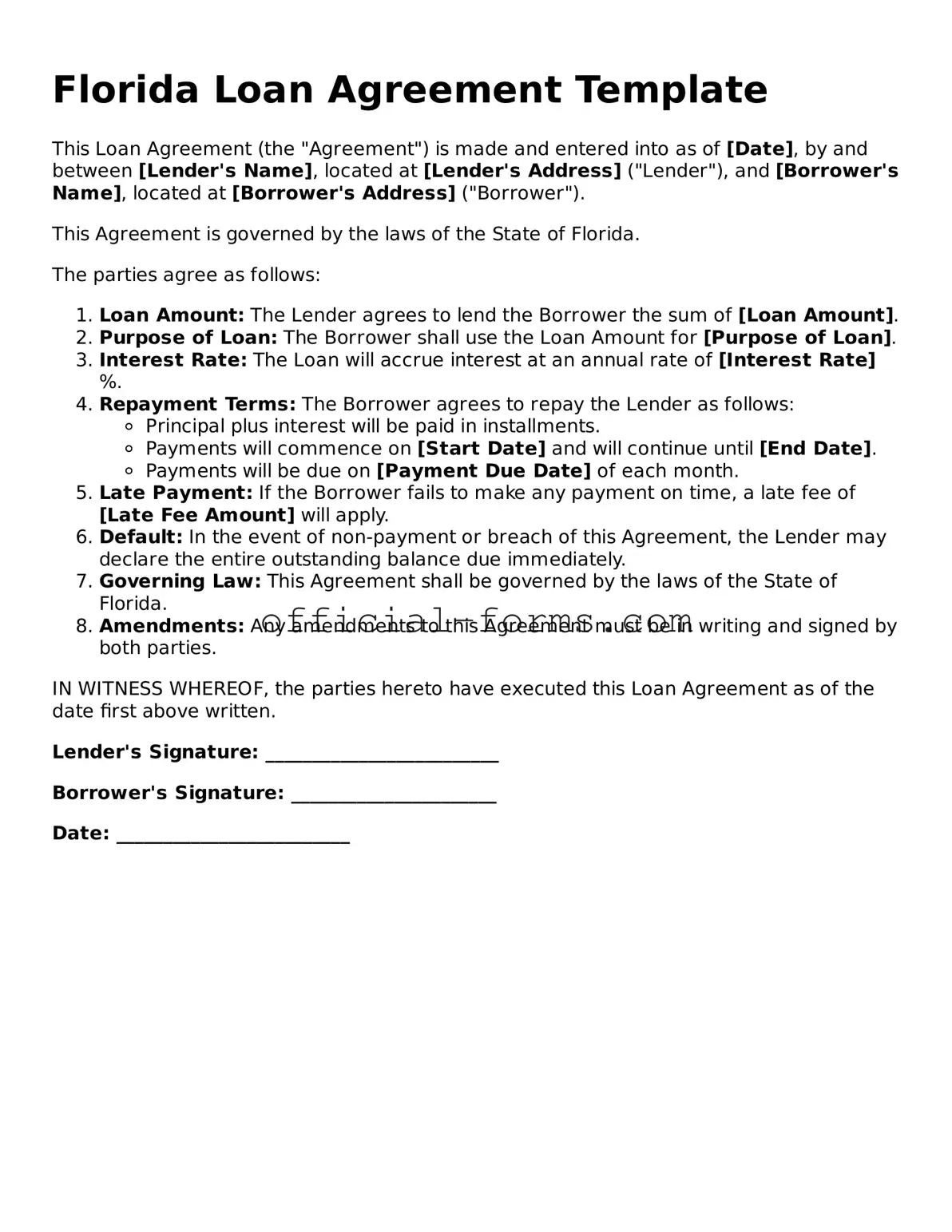Official Florida Loan Agreement Document
A Florida Loan Agreement form is a legal document that outlines the terms and conditions under which a borrower receives funds from a lender. This form serves to protect both parties by clearly stating the loan amount, interest rate, repayment schedule, and any applicable fees. Understanding this agreement is crucial for ensuring a smooth borrowing experience and avoiding potential disputes.
Open My Loan Agreement Now
